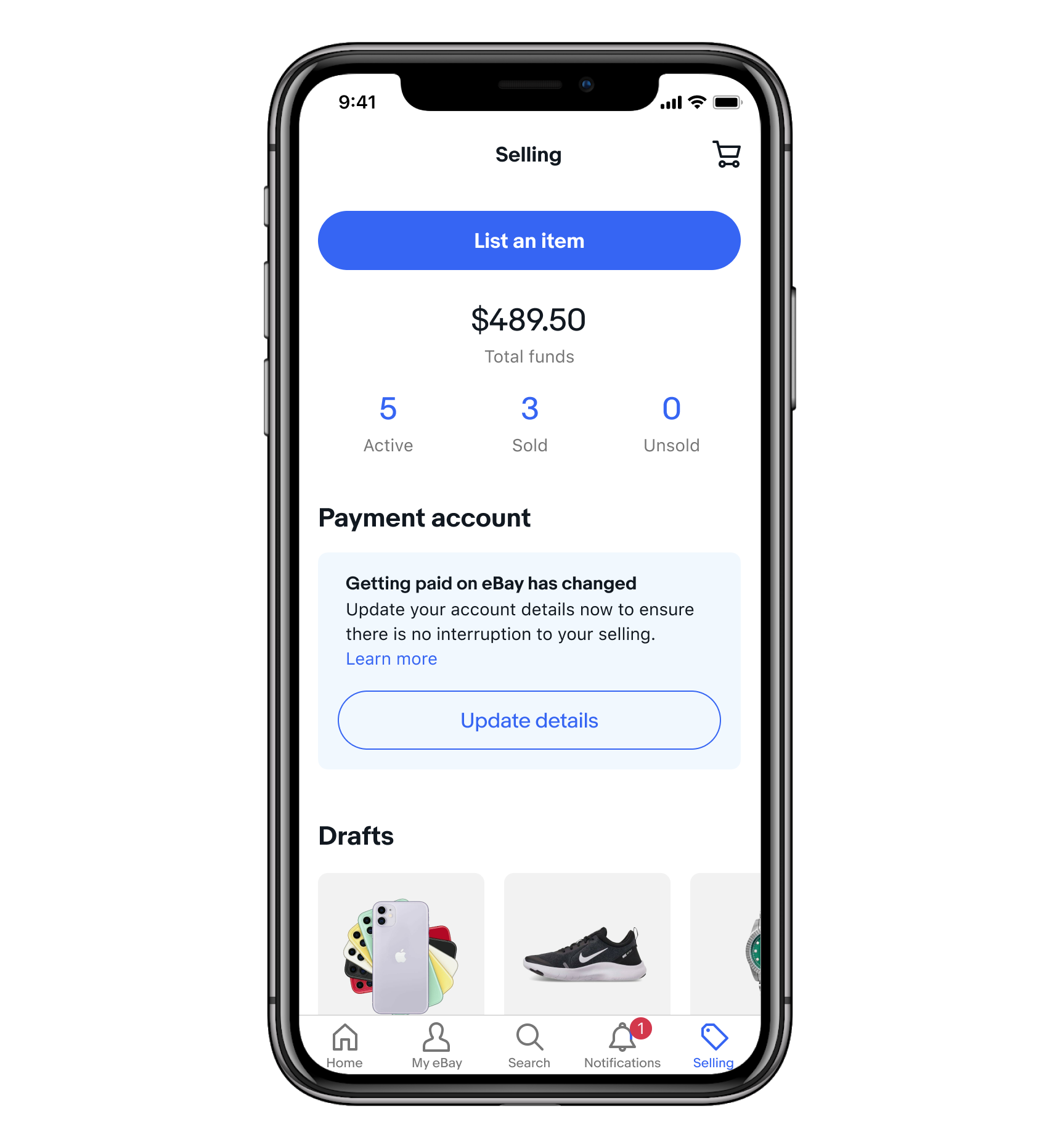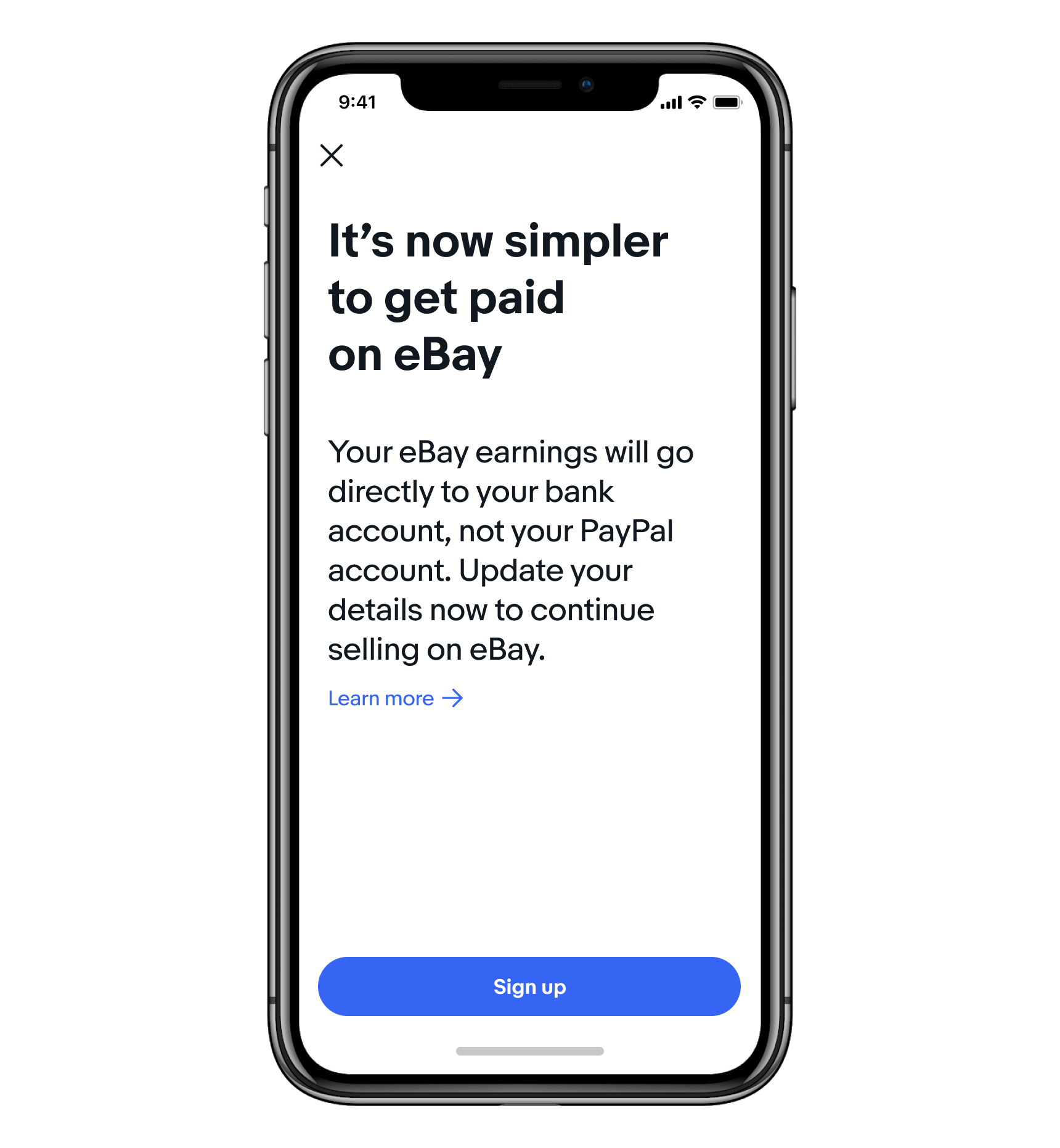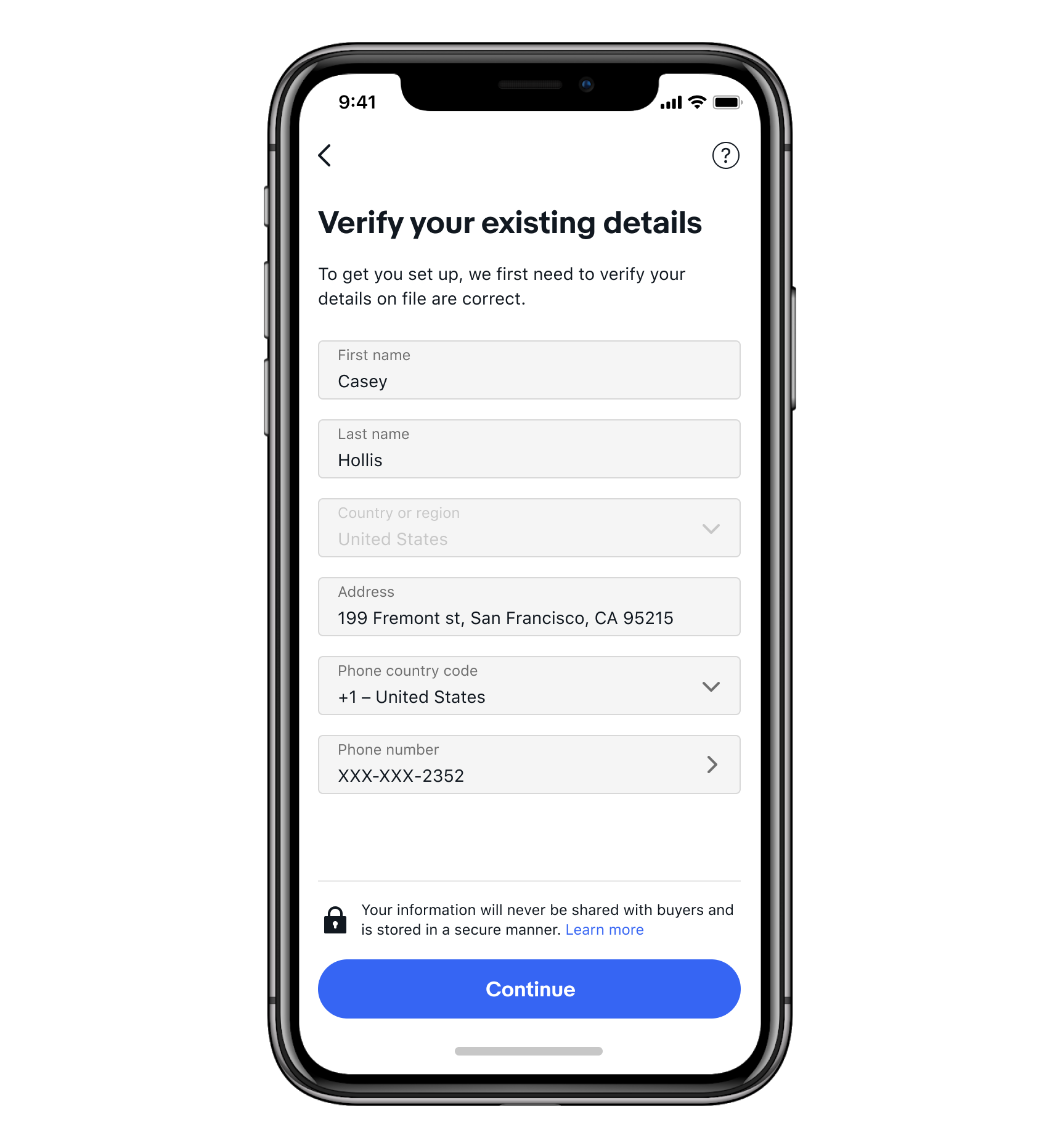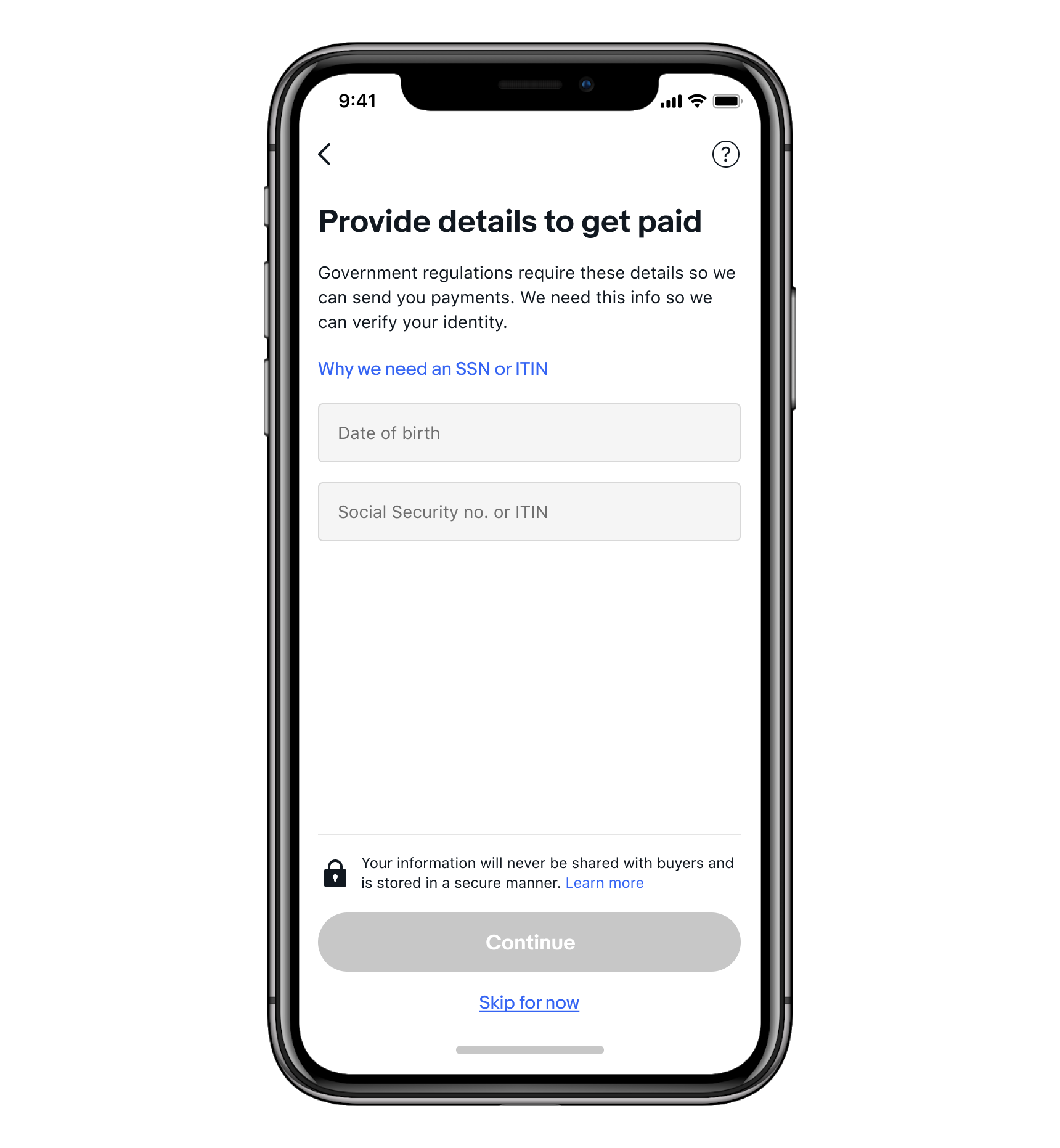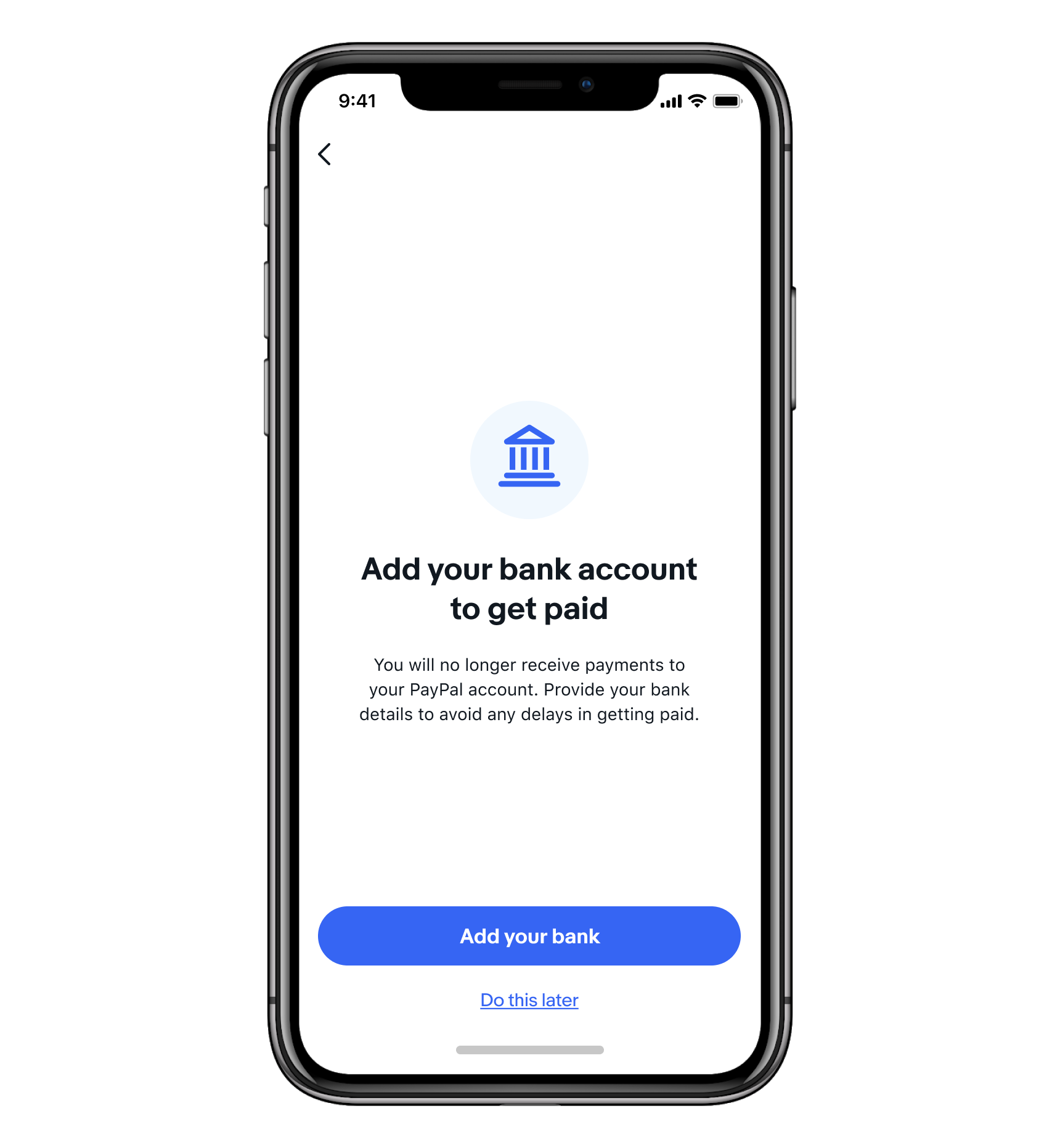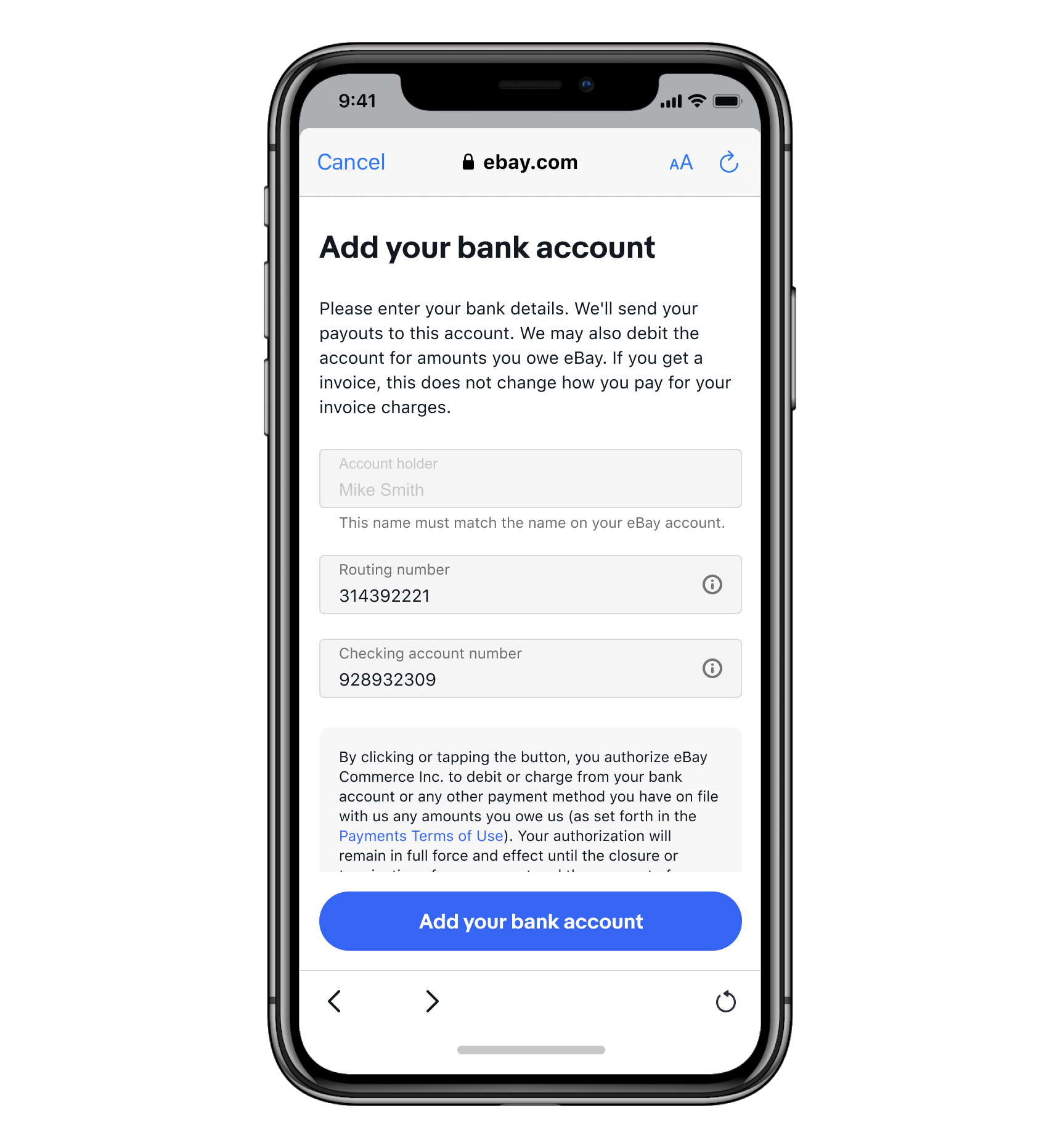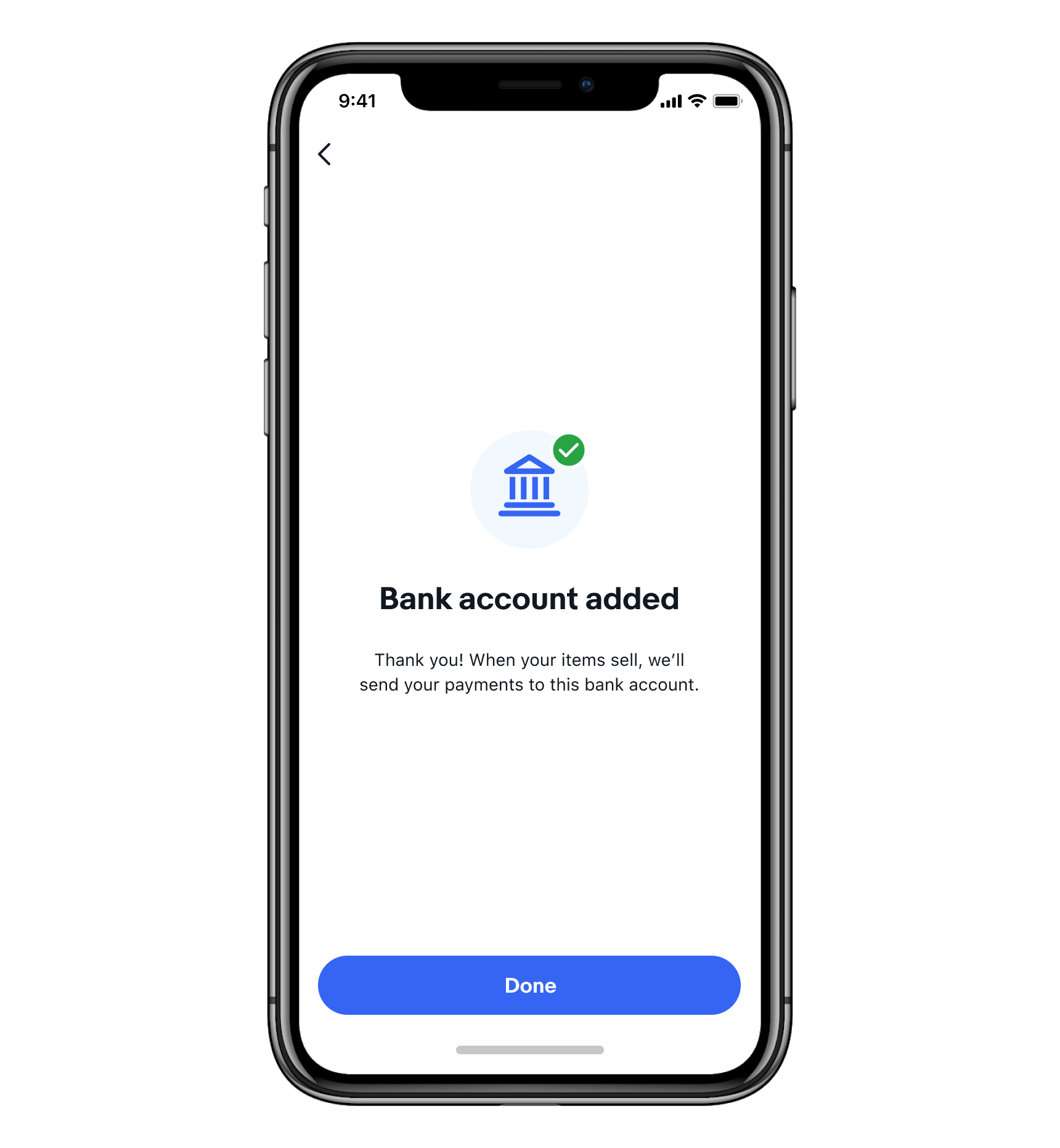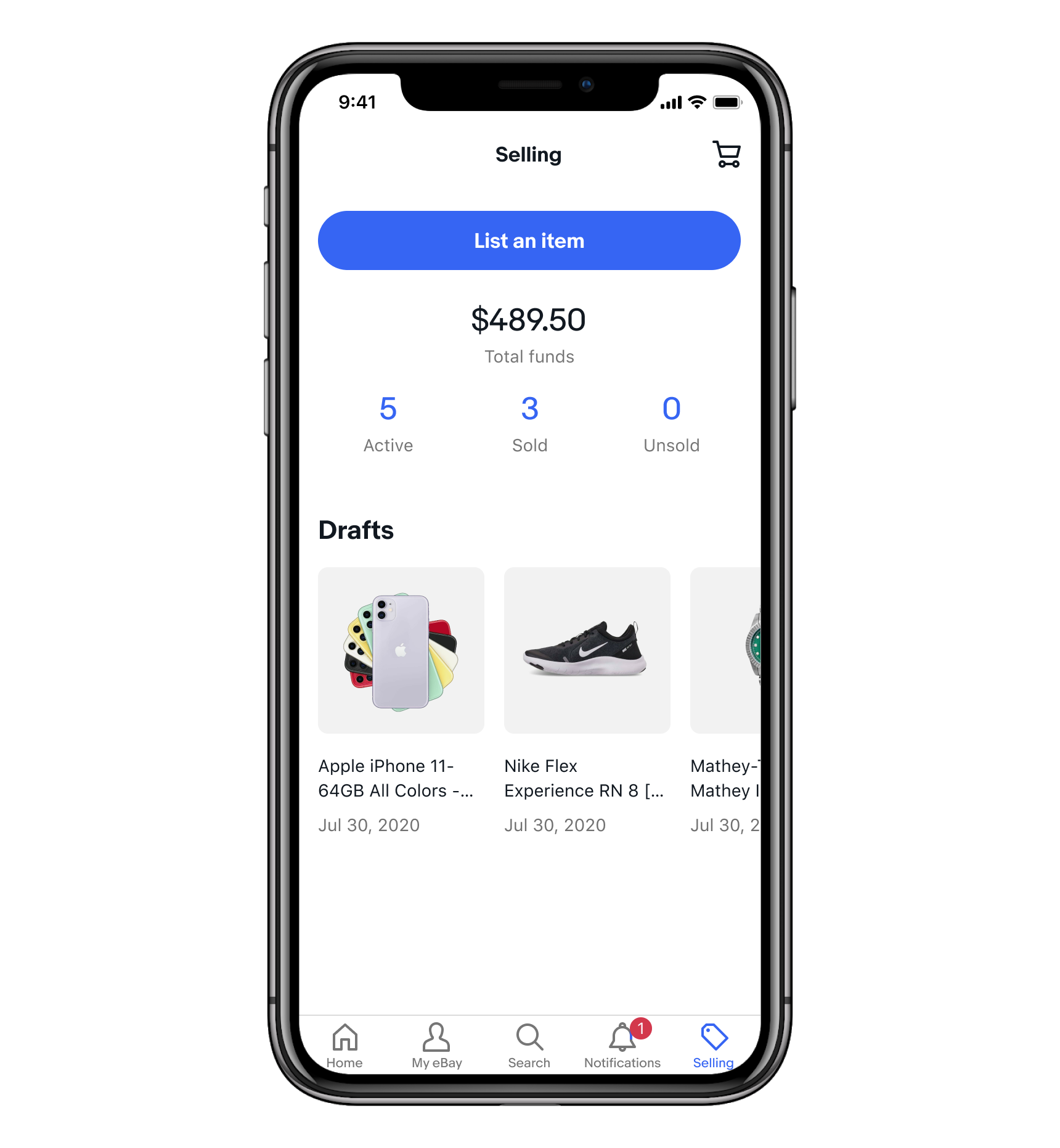C2C seller migration to managed payments
Date: March – August 2020
The first page of the C2C migration experience that helps set the stage for what is happening.
Role: UX Design Lead
Note: I was the sole designer through the defining, exploration, testing, and creation of initial UI mocks. I transitioned the project to another designer in the finalization and production stage, but oversaw him until it was completed.
I worked closely with: Product Managers, Engineering, Business Unit, Regional Markets, Junior designers, UX Research, Content Strategy, Legal, and Risk
Overview
One may not immediately think of the need for a migration or onboarding flow when they think “Payments”. However, the reality is that any time money movement is involved there are intense regional laws and regulations that the payment intermediator (in this case, eBay) must follow, including verification of identity (also known as KYC – “Know Your Customer”).
User group
Due to our vast types of sellers, the onboarding flows are not a one-size-fits-all experience. The focus for this project was C2C (Consumer to Consumer) sellers who already had an account on eBay, but needed to migrate to Managed Payments.
User Problem
As an existing C2C seller, in order to move to the new payments platform, I need to provide personal information and agree to the new terms of service. This signals a big change in how I’d sell on eBay and it requires providing information I may be wary to give.
How we solved the problem
By creating an experience that allows a user to choose when to handle friction while focusing on a way to make it easy. Being direct and transparent about the changes to help reduce confusion later down the line.
Design Principles
These design principles were created from an amalgamation of research insights and previous domain knowledge to help guide us through the designing and decision making process.
Cut the fluff
Get to the point, don’t try to make it feel greater than it is. Most C2C sellers are just along for the ride.
Friction can be strategized
Whether it's asking for more information from the seller or just adding friction to drive comprehension, every bit should be thought out. We should have the right amount of friction, at the right time.
Only show the critical info
Comprehension is important, but less is more. Ask “will not knowing this information seriously affect their day to day selling process?”.
Look at it holistically
This flow has multiple entry points that evolve as time goes on, so we need to make sure we are taking into account the holistic approach.
Exploration of approach and strategy
How progressive?
This was the big question from the get go. Do we ask for all the information up front and get it over with? Or ask for it bit by bit over a period of time?
In order to follow our ‘Friction can be strategized’ principle, I created a scale to see what our options were and what we could test. I created three models: All upfront, Hybrid, Totally progressive.
Where is the pain
While looking at the possible models, I also took into account which information collected will cause the most friction for the seller to provide.
Most friction
Social Security Number
Very sensitive information that one doesn’t usually give without deep thought.Bank account info
Most people don’t know their account and routing numbers off the top of their head and would need to look it up.
Testing and Findings
We ended up creating prototypes of models 1 and 3 to test with a group of sellers.
While progressive information collection can be helpful at times, in this case we found there wasn’t a lot of added value for four main reasons:
The amount of information we needed was minimal, little enough that they’d rather get it over with.
A lot of it was already on file and only needed to be confirmed it was still correct.
The more painful information had an option to be skipped until later.
Not making it clear that a bank account and Social Security Number was needed until after they’ve sold an item felt like a bait and switch to some of our sellers.
Due to this, we found asking for all the information upfront, Model 1, was most successful.
All upfront: Collect all required information when they agree to move to Managed Payments, but make bank and ID # optional until time to get paid.
Hybrid: Show any info we already have on file upfront to be confirmed. Any net new information would be collected after an item sells.
Totally progressive: Only collect agreement to Terms and Conditions. All other updating and info happens when paid. The hypothesis is that a more progressive onboarding may be better for new sellers or sellers not as “bought into” eBay.
Iterating
The requirements changed a lot during the project and because it was a high impact flow it went through several reviews. All of this resulted in a lot of iteration. In the last month of the project we had a new designer join our team and he joined me in this iteration process.
Mapping out the experience
Look at it holistically
Once the requirements were finalized and the flow went through several iterations, we looked beyond just the actual flow and took a systematic approach to see the best way we could put them into the experience. In the flow diagram to the right, the pages with the blue background is the actual migration flow.
Final designs and outcome
In the end we delivered the C2C migration experience for the United States, Germany, Canada, United Kingdom, and Australia for desktop, mobile web, and the native app.
We continued to check in with product and engineering as the flows were built and the experience started launching in November 2020. Since then, over 9 million sellers have gone through the flow and it’s been expanded to 10 other eBay sites, working for 200+ countries globally.
We’ve been keeping an eye on seller feedback and have followed up with several experience improvements, including changing the requirement from full Social Security Number to only last 4 digits and adding more emphasis on privacy.
Interested in the strategy behind getting our sellers to go through the migration flow? Read the details in the Required Participation case study.
